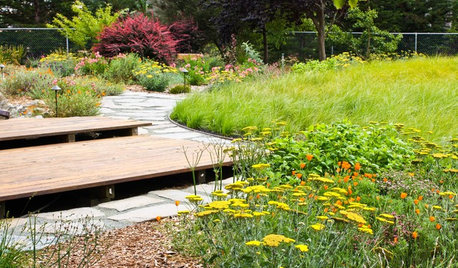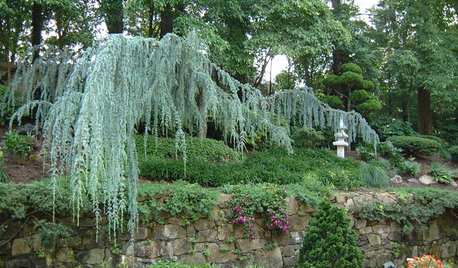Harlequin Maple variegation problem
green_go (Canada, Ontario, z 5a)
9 years ago
Related Stories

LANDSCAPE DESIGNProblem Solving With the Pros: How to Build a Garden in an Urban Canyon
Skyscrapers, noise and deep shade create an unlikely sweet spot for a timeless green retreat in New York City
Full Story
GARDENING GUIDES13 Japanese Maples for Shade
A surprising variety of these understory trees is waiting to make a statement in your shade garden
Full Story
TREES11 Japanese Maples for Breathtaking Color and Form
With such a wide range to choose from, there’s a beautiful Japanese maple to suit almost any setting
Full Story
GARDENING GUIDES8 New Ways to Garden This Year
A successful garden means knowing the plants, the wildlife and yourself
Full Story
GROUND COVERSGround Force: 10 Top Ground Covers for Your Garden
Protect your soil from weeds and drought this summer with a living mulch of ground covers
Full Story
PLANTING IDEASDesigning With Conifers: Exploring Color
Colorful, structural and adaptable, conifers are waiting to transform your garden
Full Story
GARDENING GUIDES8 Native Shrubs for Year-Round Bird Feeding
It’s not just about berries. These plants provide insects for birds and seasonal interest for gardeners
Full Story
KITCHEN BACKSPLASHESHow to Choose a Backsplash for Your Granite Counters
If you’ve fallen for a gorgeous slab, pair it with a backsplash material that will show it at its best
Full Story
LANDSCAPE DESIGN7 Great Trees for Summer Shade and Fall Color
These landscape-pro faves straddle the seasons beautifully. Could one enhance your own yard?
Full Story
GARDENING FOR BUTTERFLIES3 Ways Native Plants Make Gardening So Much Better
You probably know about the lower maintenance. But native plants' other benefits go far beyond a little less watering and weeding
Full StoryMore Discussions








Toronado3800 Zone 6 St Louis
ken_adrian Adrian MI cold Z5
Related Professionals
Forest Acres Landscape Architects & Landscape Designers · Havre de Grace Landscape Architects & Landscape Designers · Roosevelt Landscape Architects & Landscape Designers · Brandon Landscape Contractors · Fort Mill Landscape Contractors · Mercedes Landscape Contractors · Royal Oak Landscape Contractors · Kennewick Siding & Exteriors · Marlton Siding & Exteriors · West Haven Siding & Exteriors · Fairfax Decks, Patios & Outdoor Enclosures · Fredonia Decks, Patios & Outdoor Enclosures · Vandalia Decks, Patios & Outdoor Enclosures · White Bear Lake Decks, Patios & Outdoor Enclosures · Winchester Center Stone, Pavers & Concretecalliope
green_go (Canada, Ontario, z 5a)Original Author
green_go (Canada, Ontario, z 5a)Original Author
cearbhaill (zone 6b Eastern Kentucky)
arktrees